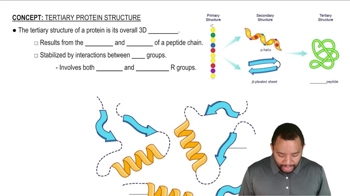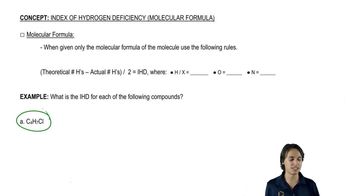Textbook Question
Draw the structure for each of the following:
a. 2,2-dimethyl-4-isopropyloctane
 Verified step by step guidance
Verified step by step guidance Verified video answer for a similar problem:
Verified video answer for a similar problem:



 3:43m
3:43mMaster The different parts of an IUPAC name with a bite sized video explanation from Johnny
Start learning